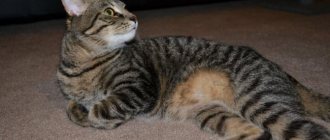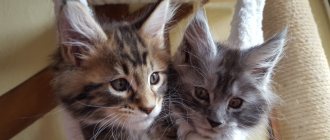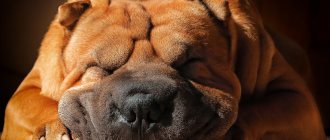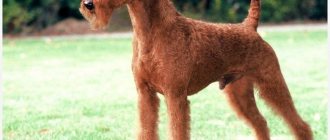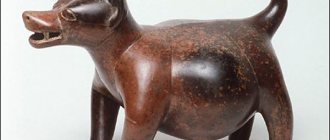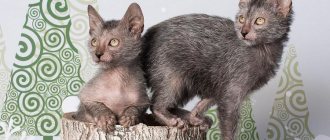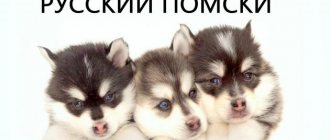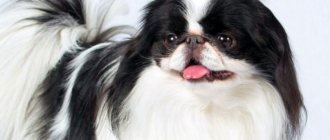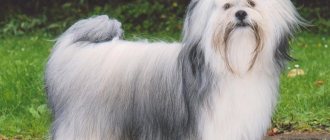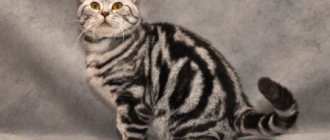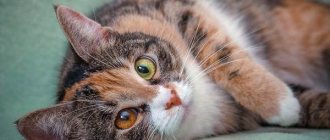Havana Brown is a unique cat breed that is now considered rare. In the ranking of endangered felines, they occupy the first position. But as pets, they are ideal. They are liked not only by their non-standard appearance, but also by their intelligence, friendliness and other character traits. They are also called oriental cats because of their resemblance to these animals. They will be discussed in the article.
Havana brown
Origin
These representatives come from England. Their ancestors are Siamese with a uniform brown coat color. Only they lost popularity after the approval of the standard, according to which the color should be colorpoint.
Havanas first appeared in America before their official recognition - in the 50s. last century. Then the development of the breed proceeded ambiguously in different countries. The British continued to crossbreed Havanas with Siamese for some time, trying to improve the animals. But the Americans strictly controlled the selection, preventing the entry of foreign blood. Therefore, at first, the Havanas from England and America were clearly different.
Baroness Miranda von Ullmann was actively breeding the breed. She crossed black short-haired representatives with Siamese individuals. As a result of nine years of tireless work, success was achieved. In 1959, the breed was registered under the name “brown shorthair” and was first presented at an exhibition show.
Then they began to make attempts to crossbreed with colored orientals. This was a necessary measure, since there were few harbors and thus they sought to increase them. The result was cats of a different breed – oriental.
Origin of the breed
Havana is a breed obtained by breeding Oriental cats. The unique cats have nothing to do with the island of Cuba; the breed appeared in the UK.
In the 19th century, unusual brown cats were brought to England from Thailand. The British enthusiastically accepted animals with the original “chocolate” color.
In Europe, Thai cats began to symbolize respectability and success. At English exhibitions, Oriental pets invariably attracted attention. In 1888, a representative of the breed even became the winner of one of the exhibitions.
Interesting! The Thai cat received the name Havana due to its original color. Its fur is the color of the tobacco in a Havana cigar.
During World War II, the population of unique cats almost disappeared. The British began to restore the breed. Since there are almost no purebred individuals left, breeders had to dilute the breed with a black European shorthair cat.
The crossing turned out to be successful. The cats received not only an attractive appearance, but also the endurance and strength of the European breed.
Some of the bred cats were sent to the USA, where breeding continued. The Americans took the matter seriously and did not dilute the breed with other species. As a result, the breed standard for the purebred Havana was established in the United States in 1958.
Standards and appearance
The breed has a CFA approved standard. According to the system of this organization, cats taking part in exhibition shows are assigned a specific title. It is determined depending on a number of factors: age, color and other physical parameters of the competitor. On the basis of which the owner is issued an appropriate certificate.
Breed standard
Description of the breed, according to the international classification:
| Body parts | a brief description of |
| Limbs | Slender, rather long, muscular. The hind ones are slightly longer than the front ones. They are more graceful in cats than in cats. |
| Tail | Medium length, gradually tapering towards the tip. |
| Head | Oblong-elongated, with a clearly defined chin of square outline. The muzzle is narrowed. In adult males, the cheekbones and cheeks are very prominent. A slight bend is noticeable along the line of the nose and forehead. The surprising thing is that the mustache is chocolate or lilac in tone (combining with the color of the coat). |
| Ears | Large ones, located far from each other. Slightly tilted forward. Therefore, it seems that the cat is in a wary state. The inside of the shells is filled with soft fluff. |
| Nose | It has a brownish-pink pad. Its line runs almost at right angles to the chin. |
| Eyes | Almond-shaped, small in size. The color allowed by the standard is all shades of green. |
| Frame | Tight and dense, with well-developed muscles. Cats are usually bigger than cats. |
| Wool | Soft and silky to the touch. Hair length – short or medium. Has a uniform color. |
Dimensions and weight
Sexually mature Havanas weigh about 6-7 kg. The cat's build is an order of magnitude larger than females by 3-4 kg. Despite their apparent lightness, the animals are quite dense and muscular in build.
Anatomical characteristics
Representatives of the breed are distinguished by incredible grace. They have a firm tread, but the animals cannot be called small. Outwardly, cats charm, especially with their expressive emerald eyes. And the coat shimmers in the sun.
One of the characteristics of the breed is a wedge-shaped muzzle with a blunt chin. Because of this, she is associated with the cob of corn. These are the only representatives of cats whose whiskers match the color of their coat.
Features of color
Cats have a characteristic rich brown coat (which is why the name of the breed contains the prefix “brown”). There are different shades. The tone of the cover is uniform and shines when exposed to sunlight. A purple color with a grayish inclusion is acceptable.
Kittens often have a subtle tabby pattern. As the kids grow up, it disappears.
However, the standard also provides for a number of other colors:
- chocolate (Havana);
- light brown (cinnamon);
- brindle;
- blue;
- beige (faun);
- red;
- black;
- marble;
- ticked;
- snow-white (rare);
- tabby
Characteristics
One can only admire the manners of Havana! She behaves very well in public, does not create mischief in the house and responds friendly to affection. This breed has truly aristocratic character traits, which are matched by the unusual, rare appearance of the animal.
Appearance
The Havana is distinguished by its grace and has a firm gait, despite the fact that the cat itself is quite large. Her appearance captivates at first sight. It seems that everything about her is perfect.
The animal's muzzle is much narrower than the upper part of the head, the chin is strong, and there is a stop (fracture) at the transition from the forehead to the nose. The eyes captivate with their openness and emerald hue, and the coat glistens in the light of the sun.
The breed in question is the only one that has a defined whisker color standard. In lilac-colored cats they should be lilac, while in chocolate beauties they should be exclusively brown.
Weight and dimensions
An adult weighs about 4-6 kg. Males are usually heavier and larger than females. Havana has well-developed muscles and strong posture, although it appears lightweight.
Features of color
The color of this cat breed is rich and includes all shades of warm brown tones. The coat color is uniform and shiny. The standard also allows for purple colors with a gray tint. At the same time, the color of the mustache is always in harmony with the color of the coat, and the eyes can be all shades of green.
Kittens of this breed and young individuals may have a residual tabby pattern. With age, it completely disappears.
Lifespan
The lifespan of a cat depends on many factors: its pedigree, the presence of chronic diseases and, of course, living conditions. With proper care, a chocolate beauty can live 15-17 years.
Read with this
- My gentle and affectionate cat: 15 breeds
- Why cats love boxes and bags
- Worms in cats (helminthiasis)
- How to pet a cat correctly
- How long do cats sleep per day?
- An expression of love or a way to relax: why do cats purr?
- Why does a cat need a tail?
- Will kittens survive winter at the dacha?
- How did cats originate?
- Leopard cat
Character
Affectionate and gentle creatures
Cats of this breed are characterized by increased playfulness and curiosity. They become strongly attached to people and need constant attention and care from them. Communication with the owner and members of his family is a vital need for them. Havanas quickly adapt to any conditions and situations. They get along without problems with other pets in the house and even “grumpy” dogs.
Non-standard behavior is manifested in everything. Due to its excessive curiosity and activity, be prepared that your pet will try to take part in all household chores. All hidden corners will definitely be explored. Havana can be found in the most unexpected places - in the laundry box, pantry or in a bag brought from the store. At the same time, the animal does not particularly impose itself, because it is a self-sufficient person.
Due to their natural intelligence and nobility, Havanas behave in an appropriate manner. These cats will never mess up or mark their territory. On the contrary, they prefer cleanliness and order: they eat and go to the toilet in strictly designated places. So there will be no problems with litter training.
One of the features is a love of heights. They constantly climb to higher places and spend a long time watching what is happening around them. Also, they are able to sit on the windowsill for hours and watch the movement outside.
Havanas are good-natured and affectionate by nature. They show their love more strongly to the owner, they can even stroke him with their paw. By the way, they release their claws only when necessary. So, in order to better examine any find, they grab it with their claws, bring it to their muzzle and smell it. But, they are overly touchy, which is worth remembering. They will not immediately show that they are offended and will demonstratively act indifferent. But they remember the insult and suffer inside.
Havan character traits
A distinctive feature of the Havana is its thirst for communication with the outside world. These are real extroverts from the cat world. They can spend hours tirelessly in the noisy company of children and other pets. With a lack of proper attention from the owner and household members, representatives of this breed feel uncomfortable and can fall into a kind of depression, losing interest in the world around them.
It is not recommended to keep these animals in a house where its owners are constantly absent. They have a hard time with loneliness, so if the owners work a lot and cannot pay attention to their pet, they recommend getting a second cat, and not necessarily of the same breed. The main thing is that the companion also loves to frolic and have fun together.
Havaneses love active games and can play tirelessly with a ball and other toys. They become true friends of children, using sharp teeth and claws only in exceptional cases of self-defense. The pet adapts well to a new place, because what is more important for it is not its habitat, but games and communication with people. Thanks to their high intelligence, these brown cats quickly master the litter box and even walking on a harness.
They are quite talkative and love to purr. But, unlike their Siamese counterparts, they have a softer and more pleasant voice. Their purring can hardly be called harsh and intrusive: the Havana very delicately addresses its owner and talks to him.
Those who are planning to get this breed should also know about the capabilities of the animals’ muscular paws: they can easily conquer the highest points of the house, and also try by touch various objects standing in an accessible place. Therefore, it is better to put your favorite vase where it will be out of reach.
Health and characteristic diseases
Handsome Brown
Overall, the Havana Brown can boast of excellent health. These representatives are endowed with strong immunity from birth and are not predisposed to genetic diseases. But they also tend to periodically suffer from some infectious feline diseases. Typically, health problems appear at a young age.
Havanas have adopted a number of diseases from the Siamese:
- kidney pathologies;
- disorders in the respiratory system;
- inflammation of the oral mucosa;
- heart failure.
In order for your pet to live as long as possible, it is recommended to visit the veterinarian more often for follow-up examinations and to vaccinate on time.
Description of the breed
Where then do advertisements for the sale of Havana kittens appear? The explanation is simple: there are three types of cats under this name.
- The first is a true American Brown Havana breed - kept in perfect purity since 1947.
- The second is British Havana Brown, registered in 1959 in England.
- The third is East Chestnut Havana (non-English).
- The last type of Havana is the youngest, appeared in the late 70s, rapidly won its place in the sun and finally received a separate status in 1984.
This type of Havana is the most common in Europe, and it is this type that is universally called the Havana Brown cat, although the differences are already visible in the name itself: the names of “American” and “English” contain the word “Brown”, which means “brown” “, and in the last species we find “Chestnut”, which means “chestnut”. It’s a small thing, but the difference is obvious!
What do all three types have in common?
No, not just color! In addition, East Havana allows for other solid colors, such as lilac (frosty grey), lilac-lavender and warm light brown (caramel).
These cats have common ancestors: Thai (Siamese) Oriental Shorthair cats.
Origin of the Havana Brown breed
The Havana Brown began as a cross between a Siamese with brown markings and a European Shorthair of a suitable color, most often black, because In those distant times, brown fur in cats was rare, almost exotic.
American and English breeders, working together, achieved a “genetically” chocolate-colored cat by weakening the lightened shades of black through multiple factory crossings of crossbred animals with each other to crystallize the necessary qualities and color of the coat. That is, further work with the new breed of cats took place “inside.” The desired chocolate-mahogany color was obtained, but since this color is inherited recessively, it was decided not to touch the resulting cat anymore, and in the late 40s a new “pure” breed, American Brown Havana, was registered in the USA.
By the way, rabbits from Holland, bred back in 1898, long before the appearance of Havana No. 1 cats, also have an even chocolate-colored coat. And the Dutch bred their rabbits from Californian rabbits of the “Siamese” spotted color. These rabbits clearly got their name in honor of Cuban tobacco: firstly, the color is important, and secondly, the “resistance” of the breed to all sorts of adverse influences. Varieties of Cuban cigars are famous not only for their color, but also for their special strength. So, cats could be named “Havana” not in honor of tobacco, but in honor of an old, strong breed of rabbits, superstitiously believing that part of the “vitality” of one animal would go to another. Breeders are not only scientifically savvy people, but also extremely superstitious. Yes Yes!
The cat turned out to be of medium size, juicy, warm, uniform, deep brown-red color. The head is of a less oriental type, with more rounded outlines, slightly longer than wide, with a distinct nurse and a depression in the area of the whiskers. The chin is strong, almost square, giving the head an almost rounded shape when viewed from the side. The ears do not look large; the height of the auricle is equal to the base. The neck is of medium length, set slightly obliquely in relation to the shoulder blades. The eyes are sapphire color, with a slight shade of green or deep emerald. The nose and paw pads are always pink. This is a description of the classic Havana cat, cat number 1.
Origin of the English Havana breed
Now let's look at Havana No. 2 - British Havana Brown or, as it is often called English Havana. Unlike America, where repeated matings with other breeds were no longer allowed after the standards were approved, the British continued to work on the cats they inherited.
A group of brown cat lovers from Great Britain have begun work on creating "purely English Havanas".
This association was called "The Havana Group", but after the obvious displeasure of American breeders, it was renamed "The Chestnut Brown Group". The creation and change of the group's name occurred in the same year - 1950.
The fact is that England had its own cats of a completely brown color - Siamese, which got there much earlier than Siamese with chocolate markings came to America.
Siamese color-points gradually replaced the red-brown “children” of Siam from the exhibition podiums, but a small number of these animals were still preserved by lovers of chestnut cats. There were so few of them that in 1930 the British Siamese Cat Club completely removed this color from the breed standard, motivating this as “a loss of interest among breeders in the further breeding of Siamese cats of the same color.”
It was with them, with these “last of the Mohicans” brown Siamese, that it was decided to crossbreed the new Havana breed. No sooner said than done!
Rumor has it that the matter could not have happened without Russian blue pussies, but the presence of their genes in this English breed is so insignificant that it can not be taken into account.
It would seem that nothing could be simpler: we take a brown Siamese cat, cover it with an American cat and at the end we get a chocolate brown kitten! In fact, this is a huge amount of work, and thanks to this work, in the English version of the Havana, the gene carrying the brown color is stably dominant, unlike the American version of the Havana.
Not only the stability of the gene has changed, but the appearance of the eastern beauty itself has also changed. Havana Brown herself remained small and flexible, but the head and the rest of the body acquired a distinct oriental “shade”. The head turned into a long wedge without any depressions in the vibrissae and saddle of the nose, the skull flattened, the neck became long and thin. The limbs became noticeably taller and thinner. The ears at the base became wider and sharper and higher. Oval eyes have lost their sapphire color, and now exclusively green-eyed individuals are in favor. The nose and paws are brown to match the coat.
This Havana was included in its lists as an independent breed in 1959 by the Council of Governors of UK Cat Clubs, mentioning that this cat is the first variety of Oriental. This breed of English Havanas remains to this day.
The most beautiful color of coffee chocolate was obtained in Swiss clubs, where the English Oriental Havana was exported as a gift to popularize and spread the new breed. It's all about the climate prevailing in the mountains of Switzerland. You can still hear “Cat of the Swiss Mountains” or “Swiss Havana”.
Don't let yourself be confused! – This is still the same English oriental chestnut eastern Havana!
Since 1974, crossing Havana No. 2 with any other cats has been stopped to preserve the purity of its new blood, and export outside the country is strictly prohibited.
Origin of the Eastern Chestnut Havana breed
It's time to talk about Cat Havana No. 3 - the most common cat not only in the UK, but throughout Europe.
Her appearance cannot be called accidental, but rather the result of the special love of cat breeders for cats the color of Havana cigars.
In 1990, it was discovered that only 12 documented individuals and about 150 without documents remained in the hands of private collectors of this brown cat.
After the CFA (Cat Fanciers' Association) decided to keep the British Havana Brown "perfectly clean" (after receiving champion status at the 1974 international show), the breed, which had been bred to itself many times, began to wither away, as it should have expect. There was no influx of new blood; several cats took part in the creation of the breed, each of which brought its own recessive. Repeatedly multiplied, these recessive traits made the English Oriental Havana excessively weakened, incapable of full-fledged production.
“Private owners” turned to the international organization for the breeding and breeding of new breeds (the same CFA) with an urgent request to allow limited outcrossing of the Havana to replenish the breeding stock and exclude common ancestors of the 4th and 5th generations from breeding. The Association of Cat Fanciers agreed to the meeting, recognizing that the Havana could be in danger of complete extinction if the breed is not given an impetus for further development. But only those kittens that have proven their breed in 3-4 generations will be able to be called British Havana Brown, the rest, similar to purebred “English” ones, will be called East Chestnut Havana (non-English East Chestnut Havana).
To implement these far-reaching plans, smooth-haired cats and cats from Europe, the USA and other countries, having predominantly brown, black or even brown tabby color, were called upon.
Ordinary outbred purrs were no longer allowed to improve. Preference was given to the previously mentioned chocolate cats: Scottish Fold and Scottish Straight, Persian Shorthair, Exotic, Burmese, Devon Rex, British, Abyssinian and, of course, the most oriental “English”.
Improved by the noble bloodlines, the gene pool of Havana No. 2 gave a fresh “shoot” of multi-species mixed kittens, which, receiving the status of Havana, quickly won not only hearts and souls, but also the world cat market.
By 2015, nurseries engaged in breeding New Havana more than doubled! The largest number of them are located in the USA, Canada, England and Switzerland.
Since the CIS countries did not provide their pets to obtain a new type of breed No. 3, they did not receive cats in return.
In Russia there are official nurseries for Oriental and Siamese cats. These are, of course, related breeds, but the breeding of Havanese breeds has not been introduced.
Similar oriental chocolate chestnuts are obtained in the Kiev nursery of “orientals”, but this is only Havana in color.
There is no East Chestnut Havana in Minsk either. There are Siamese, Oriental, British, Burmese kittens of coffee and chocolate colors, but there are no true “Havanese” ones.
You can buy a very good kitten No. 3 through private advertisements, but here you will have to rely entirely on the conscience of the seller.
Care and maintenance
Shorthaired Havanas require minimal care. The main thing is to plan your diet correctly and not neglect basic hygiene procedures.
Good care is the key to a happy pet's life
Ears
Ears should be cleaned at least 2 times every 7-8 days. This is done using cotton swabs. The main thing is not to damage the sink. Therefore, for the safety of the animal, the procedure is carried out with some precautions:
- in the evening, when the cat is tired and not so active (will not resist much);
- fix the animal’s head in any convenient way (for example, wrap the cat in a blanket).
Wool
The fur should be combed as often as possible, especially during the molting period. The animal likes such an event and there is no resistance. Even if you don’t have enough time, you need to find a few minutes 2-3 times a week to pay attention to your pet’s fur.
Claws
Claws are trimmed as they grow. Use special forceps (sold at a veterinary pharmacy or pet store). You can also buy silicone claw covers there. By wearing them, you can be sure that the furniture in the house will not be damaged. Another solution to the problem is to install a scratching post.
Bathing
Frequent water procedures are contraindicated, since they do not particularly like them. Wash your cat as it gets dirty - 3 times a month is enough for prevention. If the cat is constantly in the house and does not go outside, one bath every six months is enough.
It is important to choose the right shampoo. It should suit your coat type. Otherwise, damage to the coat (wool and skin) is inevitable: fading of color, hair loss, itching and flaking of the skin.
Teeth
The condition of teeth is primarily affected by nutrition. Therefore, to maintain their health, in addition to dry food, you need to give your pet chewing dental toys. Feed mixtures must be premium.
Havanas are prone to plaque and tartar buildup. Bleeding from the gums also occurs. If there is an unpleasant odor coming from the animal's mouth, there is a problem with the teeth. You need to visit a doctor for treatment.
At home, brush your pet's teeth once a week.
Eyes
Every day, do not forget to clean the cat’s eyes from accumulated dirt. Simply remove it from the corners with a cotton swab dipped in boiled water. If your pet experiences watery eyes due to dust or for any other reason, wash the eyes with weak tea leaves.
Nutrition
The appearance and general well-being of a cat depends on properly organized nutrition. Havana is not particularly picky about food, but breeders advise feeding it with special industrial feed of the highest quality. They do not contain harmful additives: dyes, fragrances, preservatives. It is better to alternate dry and wet food.
If the owner decides to feed the pet natural products, then there should be more meat (lean) in the diet.
You should not give cats bony fish, smoked meats, sweets, pickles, sausages, or food from the owner’s table.
Recommended food
The photo below shows a range of recommended premium feed mixtures. Before purchasing, it is advisable to read owner reviews about the selected food.
Premium feed
Havanas eat the following brands of food well:
- Brit Care;
- Farmina;
- Daily Cat;
- Gina Elit;
- Arden Grange.
It is worth noting that Havanas are prone to overeating. Therefore, they should be fed in small portions, enough to satiate them. You can count calories and create a feeding schedule - this will prevent your pet from becoming overweight.
Vaccinations
To protect against common infectious and viral diseases, appropriate vaccinations will be provided, which should be given to your pet according to the established plan. A kitten is vaccinated for the first time at the age of 8 weeks. After 38 days, the procedure is repeated, but a rabies vaccination is added.
After this, Havan is vaccinated once a year. Anthelmintic treatment is needed every 12 months. For fleas and lice, special drops and shampoos are used. For walking outside, buy a protective collar.
Features of behavior
The Havana is a fairly intelligent and very curious animal. Cats, as a rule, hide from guests, but the Havana, on the contrary, rushes to meet them with all its paws, overtaking the whole family. Havana will not only happily sit quietly in your arms, there are “specimens” that need to climb onto your shoulders. Particularly active pussies will always get under your feet, controlling all your actions: this cat needs to know everything, to participate in all matters.
Havana is playful and sociable, but she is not one of those cats that, if they just stay “on the farm”, will create bedlam at home.
She is attached to her family, however, she will not suffer if she is left alone for a long time. In addition, these cats, according to the owners, tolerate travel very well, during which they behave very calmly and obediently, and are not afraid.
An interesting feature: the Havana often uses tactile contact to communicate. She puts her paws on her owner's leg and begins to meow. This is how she tries to attract attention.
How to choose a Havana kitten
Sweet Havanas
Compared to other breeds, this one is quite expensive due to its rarity. The price of kittens depends on their quality, but on average it is 75-80 thousand rubles. If the specimen is perfect in all respects, the cat will cost much more.
You should buy kittens from specialized nurseries, although there are not many of them. You can contact clubs registered with felinological organizations. They first check the availability of appropriate documentation confirming that the baby belongs to the breed. It would be useful to get to know the parents and the conditions of detention.
You should not separate a kitten from its mother before it is 3 months old. By this age, they have time to develop strong immunity, they receive all vaccinations on schedule and already know how to feed themselves.
When examining your pet, pay attention to the following points:
- A purebred representative may have spots on the coat, stripes or rings on the tail. Elusive patterns that gradually self-destruct are also possible.
- A healthy kitten should be active and friendly. Expression of aggression is unacceptable.
- There should be no dirty discharge near the eyes and nose.
Mixed breeds obtained as a result of mating of interbreed individuals are not considered defective. They are allowed to reproduce.
How to get a kitten
Buying a Havanese kitten is not an easy task. The breed is rare, so you need to be careful and careful when purchasing so as not to encounter scammers. You must ask the seller for a pedigree and a veterinary passport with vaccination records. It is advisable to look at the kitten’s parents, assess their health and compliance with the breed standard. The kittens themselves may not meet the standard, since the breed is characterized by age-related changes in appearance.
Kittens that are 3 months old, vaccinated, and independent are offered for sale. A healthy Havana kitten is active, inquisitive, fearless, non-aggressive, with clean ears, tear ducts, anus, and no signs of disease or parasites on the skin.
Cost and nurseries
The world population of purebred Havana Browns does not exceed hundreds. The majority live in the USA and Western Europe. There are no nurseries in Russia and the CIS.
The rarity led to a high price. For a pet kitten (companion) they ask for up to $1000 , for a breed pet (for breeding) and a show (for exhibitions) you will have to pay 1800-2000 dollars .
Photo of the Havana Brown breed
Formidable but not dangerous
Havanese are interested in everything that happens around them
Comfortable to sit on the owner's shoulder
Truly an important person
Fit for royalty
Apparently tired, lay down to rest
Description of the breed
- Additional colors are allowed.
- The head has lost its ideal “Siamese” shape, but has not acquired its original round shape, that is, the width of the head is slightly greater than the length of the muzzle and does not form a Siamese wedge.
- The ears are in good proportion to the size of the head, set wide apart and have a rounded tip. The ears are turned forward, which always gives the cat a slightly wary, sensitive expression.
- The eyes are oval in the oriental style, medium-sized, intense green. A golden tint is allowed. The gaze is attentive, not wary, with well-expressed curiosity.
- The color of the paw pads and nose is consistent with the general coat color, but even in dark chestnut individuals black color is not allowed.
- The structure of the coat is common for all “Easterns” - short, dense. The color is the same along the length of each hair. In kittens, mild tabby is allowed, which should disappear with age. For any color, the tone should be as saturated, rich and warm as possible.
- Disqualification for cats with tail kinks, spots or black color.
- The Havana is the only cat whose standards specify that the color of the whiskers and eyebrows must be the same color as the rest of the coat.
It would be interesting to note the fact that TICA (The International Cat Association), whose headquarters is located in Harlingen, Texas (USA), did not recognize the new East Chestnut Havana breed. Jealousy?
Interesting Facts
You can tell a lot of interesting things about this breed. Here are some fun facts:
- Havanas are suitable for people prone to allergies to cat hair. Due to the short coat and rare shedding, there will be no health problems.
- Oriental cats are widely called “rainbow”. This is because they come in multiple colors.
- Due to the lack of undercoat, cats cannot tolerate low air temperatures. Therefore, they must be protected from drafts and not allowed outside in winter.
- With good care they can live up to 20 years. Because of this, they are considered to be long-livers.
- They are remarkable for drinking water from a bowl. Sometimes they start scooping it up with their paw and bringing it to their mouth.
- In the absence of attention from the owner, they begin to meow loudly and show their displeasure in every possible way.
- Sometimes Havanas get jealous. This applies not only to family members, but also to a specific place or object.
- Cross-eyed Havanas are sometimes found. Such a phenomenon is not acceptable according to the standard and is listed as a defect.
- Havana cats rarely use their claws. Therefore, they will be the best friends for children.
- There is a version that Havanas are telepaths - their intuition and sensitivity are so highly developed, which is unusual for other representatives of the cat family.
- They often begin to copy the behavior of their owner. Therefore, many cats begin to go to the toilet in a human way - on the toilet.
Character of the breed
Havana needs human interaction. Characteristics of the breed: sociability, affectionateness, friendliness, affability, independence, unobtrusiveness. The cat will not demand attention or interfere with the owner’s household chores, but is constantly nearby and watches the owner’s affairs with interest. The pet also loves to relax with its owner, nestled under the arm.
Havana quickly adapts to the environment, willingly communicates with guests, and enthusiastically participates in children's fun. The main behavioral and character traits are playfulness, talkativeness, and mischief. The pet is ready to play continuously; she received curiosity and a developed hunting instinct from her parents. Havana reacts sensitively to the slightest rustle, does not like closed room doors, knows how to pick up things he likes with his paws, carry them away and hide them so securely that it is useless to look for them.
Loneliness is unbearable for Havana. The pet, having fallen into depression, becomes seriously ill. Therefore, you should not get a cat if you are constantly busy and rarely present at home. To prevent your pet from getting bored, it is recommended to purchase a second cat of a similar breed. Havana gets along well with non-aggressive dogs, but you should not have hamsters and parrots: small animals will be eaten.
Havana is talkative and accompanies every event with meows. The cat's voice is quiet, melodic, similar to a purr, and does not irritate.
Havanas love to climb high and climb wall shelves and cabinets. Therefore, the owner has to constantly ensure that the pet does not break a vase standing on a shelf or tear up the curtains. The cat likes to watch what is happening in the apartment from above and chooses a certain point as an observation point.
Nurseries
There are few nurseries in Russia that breed the Havana Brown breed. Here are the ones you can contact:
- Magic Grace – Moscow;
- De Fides, De Fides, Ru Higashi – St. Petersburg;
- Elven Kingdom - Novosibirsk.
Havana Brown is the best choice of a mustachioed pet for people who are willing to devote a lot of time to the animal. In return, a person receives affection, boundless love and affection. Communicating with Havana fills you with only positive emotions. In addition, the cat pleases the eye with its attractive appearance. You just need to buy a kitten from a nursery, so as not to come across a scam.
Video with Havana Brown cat:
Rare breed of Havana cats
Before we start talking about the breed of a cat such as the Havana, let’s be clear right away: the true breed of Havana cat is not available to you, your friends, acquaintances, and even the governors of your region or region you know. Under the guise of this breed you may have: Oriental, Scottish Fold and Scottish Straight, Persian Shorthair, Exotic, Burmese, Devon Rex, British, Abyssinian chocolate-colored cats.
If you have a cat, then it’s a different matter! A Havana cat can “happen” in our country if the owner is willing to pay from 5,000 to 10,000 US dollars for it (depending on the pedigree and class of the cat), but this cat will be unsuitable for breeding due to surgical intervention at the age of 4-6 months . Before this age, no one from the breeding nursery will sell you a kitten: the positive potential before this time is difficult to determine, and if the potential of the future stud cat is determined to be low, then the cat can be sold, having first deprived him of the opportunity to spread his low potential throughout the whole world .
As of 2015, only 123 purebred Havana cats were registered in the world.
It’s simply scary to imagine the cost of this cat! Probably for this reason they are not sold, but are used purely for breeding purposes. Well, and because of the “limited contingent”, of course!
Character and behavior of Havana cats: advantages and disadvantages
According to breeders, cats of this breed have their own pros and cons in their character.
Description of behavior typical of Havana cats
Bombay cat - description of Bombay cats
Havana cats are the living embodiment of a perpetual motion machine. Their character is friendly, they are natural friends of man. They love to “chat” with their owner so much that even between communication and food, they will choose the former.
Important! A kitten of this breed will immediately show its intelligence and curiosity. These pets have one amazing habit - they look into their owner's eyes. They are not afraid of being looked at and love to be around.
They use their paws like people use their hands. They can pet their owner in moments of tenderness. They hold food in front of them, like squirrels. The pet hates closed doors, so if the owner goes to the bathroom, he should prepare for the fact that a dissatisfied “meow” will be heard from behind the door.
There is no nastiness in the nature of these cats, they are not harmful and are absolutely not touchy. These beauties don't like to be left alone.
Relationships in the family: to children, to other pets
Havana children are loved beyond measure. They have genuine interest and immense love for children. If the baby does not calculate the force and hurts the cat, the animal will not react with aggression and release its claws, but will prefer to go to another room.
Pets love company very much, so you can safely get another Havana or dog. They get along well with dogs and over time you can observe their tender feelings for each other.
Training and education
The gavan's intelligence allows them to easily learn simple commands. It cannot be said that the animal will understand the words “you can’t”; rather, it will react to intonation.
Amenable to education. She will never allow herself to do too much, even though she is still a fidget. The cat litter box is not a problem for them, but a completely normal part of life.
Havana cat health
